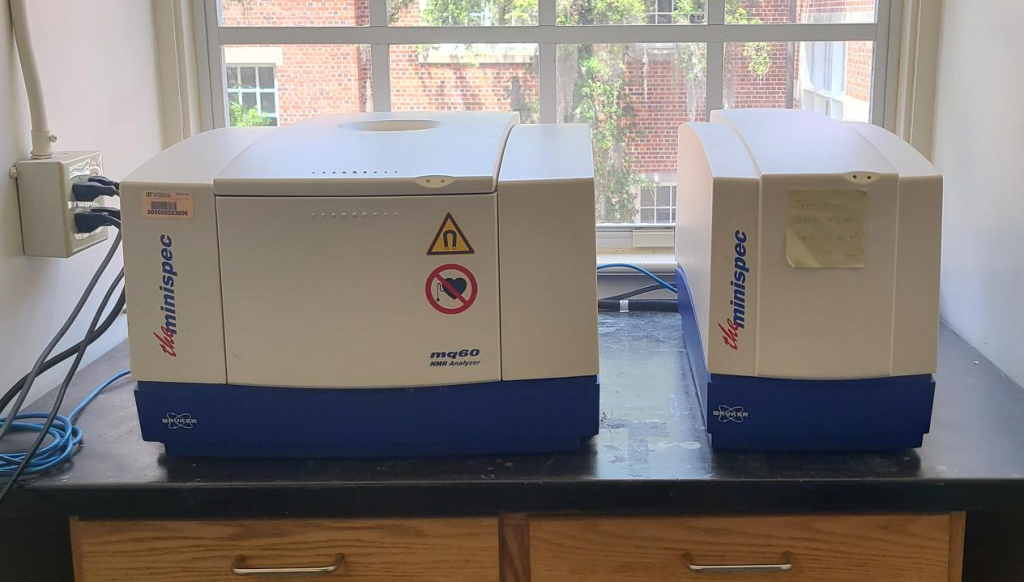
| Bruker | mq60 |
| Magnetic field strength | 1.4 T |
| Frequency | 2 – 65 MHz |
| Temperature | 35 – 45 °C |
| Configurations | 1H, 1H/13C |
Nuclear magnetic resonance (NMR) advantages nuclear spin behavior during exposure to an external magnetic field in order to determine sample structural information. Not all nuclei are affected by the external magnetic field; only those with non-zero nuclear spins (I), generally isotopes with non-equal numbers of protons and neutrons, are NMR-active. The most common NMR-active nuclei are 1H, 2H, 13C, and 15N. As most of these NMR-active nulcei are minor constituents in samples (e.g., natural 13C is 1.1% of carbon), many averages and/or strong magnetic fields are applied to significantly increase signal-to-noise.
Samples are submitted to a strong external magnetic field (B0) in order to orient nuclei magnetic moments (spin, I ≠ 0; parallel spin orientation). During the excitation stage, radiofrequency (RF) is applied in pulses, which causes the nuclear dipoles to re-orient anti-parallel with the applied magnetic field. The relaxation stage measures the resonance signal (or free induction decay (FID)) as a function of time as the nuclear spins relax back to their parallel orientation. This resonance signal encodes information such as the chemical shift, peak shape, linewidth, and intensity that is directly related to the sample’s molecular structure.
- Magnetogyric ratio (γ): isotope specific magnetic dipole value
- Chemical shift: Resonant frequency of the nucleus as affected by electron shielding. Encodes information about local chemical environment of atoms within the molecule.
- Spin-spin coupling: Spin state interaction through chemical bonds from non-identical nuclear spins that are affecting, influencing, or disturbing, each other’s spins. Encodes information about peak splitting based on adjacent atoms.
- Relaxation time: Encodes information about molecular dynamics.
- Area under the peak: Encodes information about atom numbers.
- Signal intensity: Encodes information about quantitation.
NMR spectra can be evaluated using tables of chemical shift and spin-spin coupling to determine functional groups and chemical bonding information or compared to spectral databases. Some useful tables and websites are listed below.